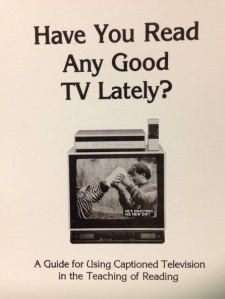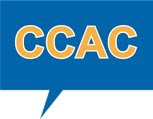MOOC’s, Learning and Education
Please don’t think a lack of blog posts over the summer means a lack of interest in the subject of all things captioning and subtitling, far from it. In fact in an attempt to improve my skills and knowledge, one of things that I’ve been busy with is learning. I took my first steps into the world of MOOC’s. In case you are unfamiliar with the term, it stands for Massive Open Online Courses. They are courses that exist online, and the majority consist of a combination of reading material and video lectures.
So you can probably guess what I am going to comment on next. As a hard of hearing person, just how accessible was the video content? Well it goes without saying that a key factor in me choosing a MOOC was not just the subject matter but whether the video and audio content was subtitled or captioned in English. The two MOOC’s I took were from FutureLearn and Coursera*
I am happy to say that it was relatively easy for me to find out if content on their courses was subtitled. I particularly like Coursera’s clear layout and course summary from a course’s main page which tells you if subtitles are available. You have to dig a little deeper to find the answer on FutureLearn’s website but it is there in a detailed FAQ – Technology and Accessibility page. All of FutureLearn’s courses are subtitled in English, I am unsure if that is the case for Coursera.
But…having established that the video content of the course itself is subtitled, why oh why, on both websites, is the introductory video not also subtitled! I have to rely only on the text description of the course to decide if it is the right one for me. This is the only opportunity you have to make me a ‘customer’ and commit to joining your course, so why are you leaving this video out? It’s clear time and effort has been put into recording and editing them – so for goodness sake make them accessible and add subtitles!
So what was the quality of the subtitling of the course content like I hear you ask? Well, varied to be honest. Starting with the good – the errors that did occur in the subtitles for both MOOC courses were not frequent enough to stop me from understanding and completing assignments. The most grave example – where a word error actually changed the meaning of the sentence came from Coursera. For example the phrase “Dublin Core” was subtitled as “Double Encore” and it was a horrible distraction when trying to understand a new topic that I had not studied before. When I pointed this out in the course forums, the staff explained it was likely due to an auto-captioning error and apologised for the mistake. They also fixed the error relatively quickly allowing me to watch the video again two days later with much less confusion. Whilst it would have been better if the error was not there at all the speed of the response to fix it meant I didn’t get left behind in my studies. On the FutureLearn course one video used an incorrect word. I have to admit if it wasn’t for my own lip-reading skills I may not have realised this. When I posted a comment about it, it wasn’t the staff that responded but a very helpful fellow learner who clarified the correct word for me.
Now for the not so good. Anyone who is a professional subtitler or captioner will know the importance of chunking, character limits per line and reading speeds. Now assuming the same guidelines for subtitling pre-recorded content for captioning/subtitles on broadcast TV also applies to pre-recorded educational MOOC videos (I don’t see why not but please comment if you disagree) these rules were not adhered to. The question is did it stop me learning? Honestly, no it didn’t (I can at least pause,rewind online) but it did make the retention and understanding harder. The user experience was not as good as it could have been. It is not what I am used to. I would prefer that the level of quality I am used to seeing on broadcast TV and DVD is replicated for MOOC videos.
Another issue, for both courses is that the teacher would sometimes direct you to an external resource such as another website or video not hosted by the MOOC platform itself. And here’s where the access falls down. On both FutureLearn and Coursera the external content contained videos that were not subtitled or captioned. So I was unable to benefit from this. Now it would be nice if the platforms only allowed external links if the content has been made accessible. However the decision to include such content is probably at the discretion of the teacher not the MOOC platform. It’s exactly the same issue we currently see with VOD (Video on Demand) platforms. They might host the video but they are not the providers of content for whom it is generally accepted that the responsibility to provide the captioning or subtitling lies with. Did this prevent me from learning and passing tests and assignments? Thankfully no, because for both courses the external content was an optional extra but it still stands that this current format/situation does not equate to equal access to content. And that is most certainly a bad thing.
Both MOOC courses that I took allowed students on the course to download a transcript of all videos (Coursera also allow you to download the subtitle file itself). This is a nice tool that all pupils on the course can benefit from. And this brings me to the point of one of the reasons I set up this blog – the belief that subtitles and closed captioning are not just a resource for deaf and hard of hearing communities, they are for everyone. There has been numerous research and studies over the last 20-30 years that suggest subtitles and closed captioning can help improve reading skills, literacy and the retention of information. There are a few websites that highlight this, the most comprehensive are Captions For Literacy and Zane Education.

SOURCE: National Captioning Institute – Guide for Using Captioned Television in the Teaching of Reading (1987)
Some of this research has been recognised and there are resources for teachers in Australia via Cap That!, and the USA via Read Captions Across America and Reading Rockets. In fact, the USA as far back as 1987 realised the benefits and the National Captioning Institute published a guide for teachers.
Does anyone know if there are or have been similar publications or resources for teachers in the UK? I have been unable to find anything and given the level of subtitled coverage on TV we now have, it seems a missed opportunity for teachers not to use it as a learning tool and encourage their use?
Going back to MOOC’s , the global nature of the internet means its recognised that subtitles are needed given the course can be taken anywhere in the world and a pupil might need to read subtitles in their own language or use same language subtitles to aid their understanding. And everyone stands to benefit from this. I really enjoyed the experience overall and will absolutely consider taking more subtitled MOOC courses in the future.
I haven’t even mentioned the services of CART (Communication Access in Real Time) or STT/STTR (Speech To Text) as an educational tool yet. These services were not available to me as a student but where they have been made available for at talks, meetings, or events I have absolutely benefited from being better at retaining the information being spoken simply because I can read every word. I look forward to more research and evidence in the area of real-time live subtitling/captioning access because again I think all learners could benefit from this not just those who struggle to hear what is being said.
What has been your experience with using captioning or subtitling as an educational tool been?
*other accessible MOOCs are available.




Claude Almansi 12:17 am on September 23, 2014 Permalink |
Great post, Dawn: thank you.
About the “double encore” for “Dublin core” error in a Coursera lecture that you mention: I think the instructor was mistaken in saying it was likely due to an auto-captioning error: Coursera used to visit appalling automatically voice-recognition generated original subs (1) on volunteer translators when it was using an Amara.org team, but at least, volunteers were able to fix them – in the course videos as well – before translating them.
But with their new crowdtranslating initiative called the Global Translator Community (GTC), they said, in a hangout for GTC volunteers:
“…When they [Coursera’s university partners] request captioning, that goes to a company that we work with,that does human language-captioning of videos. So then people listen to the videos and actually,humans write out the words that are being spoken on the screens.
Now, the people who are doing these captions, they are not subject-matter experts,so, for instance in the course on Machine Learning, you know,they’re probably going to get some words wrong, there are going to be grammatical mistakes and, you know, one of the challenges that I realize, that we certainly realize is a challenge,is that English transcripts are not perfect.We think that they’ve improved a lot, we’ve worked with this provider that we use to improve that.I don’t know if any, if actually some of you had been on the platform for a couple of yearsand saw the transcripts back in 2012,and maybe you can tell that they have gone better — I hope so.” (1)
Actually they haven’t, by a long shot: there might be fewer transcription errors than with the former auto-captions, though that’s arguable, but now, as the GTC uses Transifex, which is NOT a subtitling app, for translating the original subtitles, volunteers have no way to fix them anymore: hence the staple absurd splitting, frequent bad syncing, sometimes long unsubtitled parts, not to mention inane mentions of non verbal audio, like just [music] without describing it. So on June 6, Coursera staff started a Google spreadsheet, http://goo.gl/ilB1uK , where volunteers are meant to report these original subtitles issues via a form, so staff can respond to them. Problem: staff hasn’t responded to a single entry after June 16.
About captioning for literacy: not UK but Indian: http://www.planetread.org/ . Pity the video on the home page is uncaptioned, but the site offers many resources, theoretical and practical.
As to my use of captioning in education: in a couple of really open online courses for Italian teachers organized by Andreas Formiconi (3), I deviously started captioning some videos then asked if other participants would like to join. Only a few did, but they got really interested, and some posted about it in their blogs.
(1) See https://github.com/acli/Coursera-subtitles#things-to-watch-out-for-if-you-want-to-work-on-courseras-subtitles
(2) From the the transcript generated by the captions in http://www.amara.org/en/videos/4H50v2EYDXP7/info/global-translator-community-hangout-with-daphne-koller/
(3) See his http://iamarf.org/ blog
LikeLike
iheartsubtitles 10:22 am on September 23, 2014 Permalink |
Hi Claude, thanks for commenting. Some very interesting background and links with regards to Coursera’s subtitling and captioning methods.
LikeLike
Arlene Mayerson 7:57 pm on September 29, 2014 Permalink |
I am a lawyer with the Disability Rights Education and Defense Fund who litigated the Netflix case. If any one has trouble accessing MOOC’s because of lack of captions, please contact me at amayerson@dredf.org. Thanks.
LikeLike